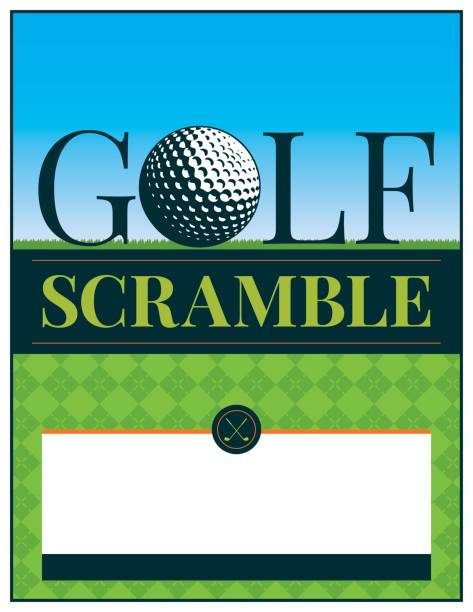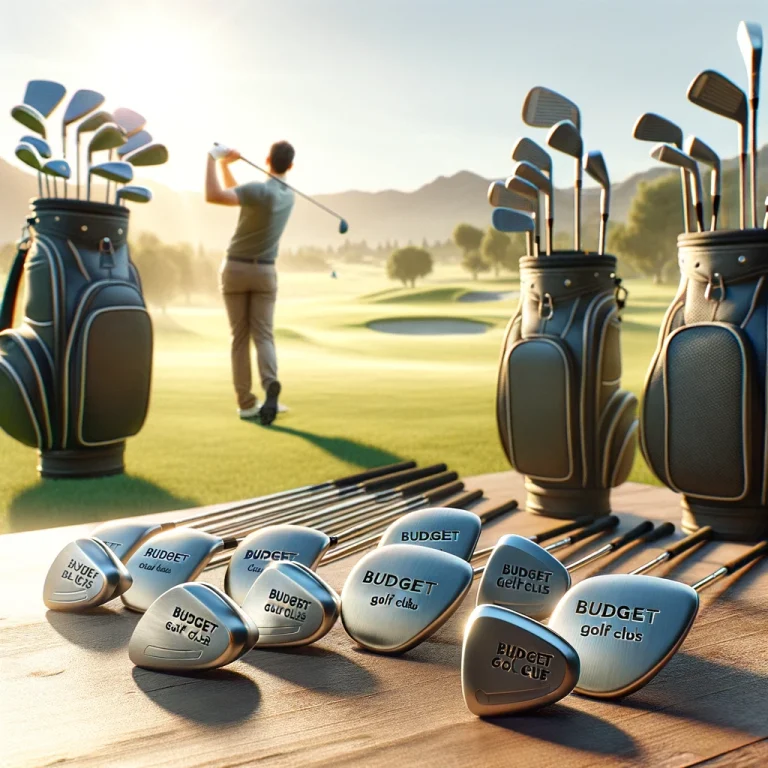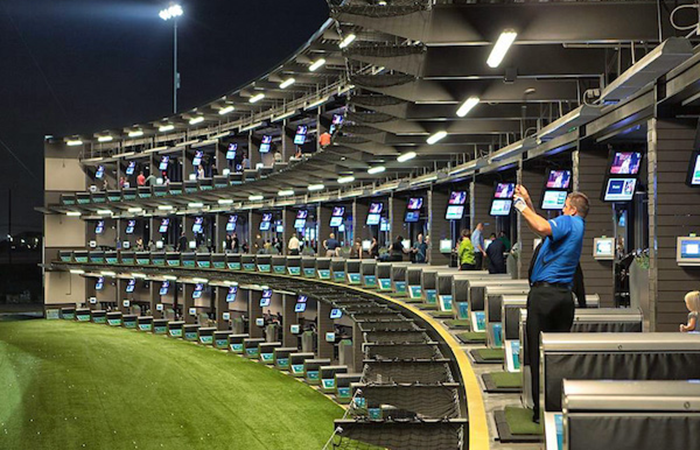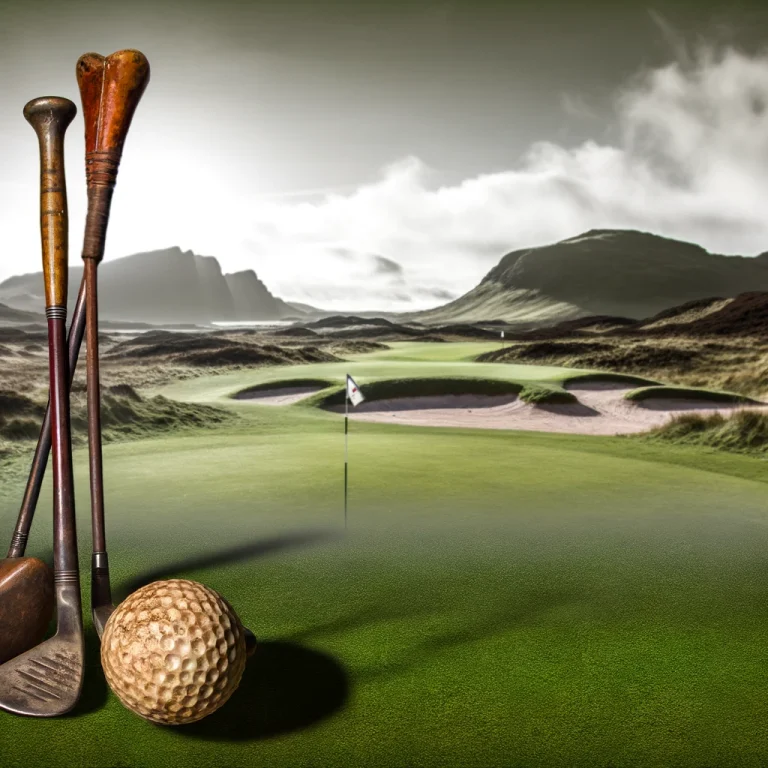Mastering the Swing: How to Choose the Perfect Golf Driver
.jpg)
Looking to improve your golf game? One key element to consider is choosing the right golf driver.
In this article, we will discuss the benefits of selecting the correct driver, including understanding club head size, driver loft, shaft length, weight, and flex. We will also explore the different types of driver golf clubs, customization options, and key considerations for choosing the perfect driver for your game.
Stay tuned to answer common questions about golf drivers and take the next steps in your golf driver selection journey.
Don’t forget to subscribe for more golf tips and updates!
Key Takeaways:
Introduction to Choosing the Right Golf Driver
Choosing the right golf driver is a crucial decision that can significantly impact your game performance and enjoyment on the course.
One of the key factors to consider when selecting a golf driver is the loft of the club. The loft determines the launch angle of the ball, which is essential for achieving distance and accuracy. The shaft of the driver plays a vital role in determining your swing speed and the overall feel of the club. Customization options, such as adjusting the weight distribution or club length, can further tailor the driver to your specific needs and playing style.
Benefits of Choosing the Right Golf Driver
When you choose the right golf driver, you can experience benefits such as forgiveness on off-center hits, improved ball flight, personalized fitting for optimal performance, and customization to match your playing style.
Forgiveness in a golf driver is crucial for reducing the impact of mishits, enabling you to maintain distance and accuracy even when you don’t strike the ball perfectly. With personalized fitting, you can ensure that the driver’s specifications align with your swing characteristics, enhancing your overall play. Customization options allow you to tweak settings such as loft, weight distribution, and shaft flexibility, leading to a tailored performance that suits your unique needs and preferences.
Understanding Golf Driver Club Head Size
The club head size of a golf driver plays a crucial role in determining its performance, with factors such as weight distribution, center of gravity (CG), and cubic centimeters influencing ball flight and forgiveness.
When considering the weight distribution within a driver’s club head, it affects not only the feel during the swing but also the ability to control the launch angle and spin rate of the golf ball. The center of gravity, often referred to as CG in the golfing community, significantly impacts the driver’s forgiveness and the ability to minimize the effects of off-center hits.
The cubic centimeters (cc) of the driver’s head size directly relate to its sweet spot size, providing a larger hitting area for more consistent and powerful shots. A driver with a higher CC tends to offer greater forgiveness on mishits, resulting in longer and straighter drives on the golf course.
Importance of Driver Loft in Golf
Understanding the importance of driver loft in golf is essential for optimizing spin rates, distance, and launch angles, which directly influence ball flight and overall performance.
Driver loft plays a crucial role in determining how much spin the ball will have upon impact with the clubface. A higher loft generally leads to higher spin rates, which can be beneficial for maximizing carry distance and control. Conversely, lower loft options tend to reduce spin, offering more roll but requiring precise control for long carry. The launch angle is heavily influenced by the loft of the driver, impacting the initial trajectory of the ball off the tee. Utilizing launch monitors to analyze these factors can assist players in finding the optimal loft for their swing style and desired ball flight.
Driver Shaft Length Considerations
Selecting the appropriate driver shaft length is crucial as it affects the club’s center of gravity (CG), forgiveness on mishits, and customization options tailored to your swing mechanics and playing style.
When the driver shaft length is too long, it can lead to a higher swing weight and affect your ability to square the clubface at impact, resulting in less accuracy and distance. On the other hand, a shorter shaft can provide more control but might sacrifice some distance. Achieving the perfect balance is key to optimizing your performance on the course.
CG plays a significant role in the overall feel and performance of your driver, impacting launch angle and spin rates. By customizing the shaft length, you can fine-tune these aspects to match your unique swing characteristics.
Factors to Consider for Driver Shaft Weight
The weight of the driver shaft is a critical factor that can impact spin rates, overall performance, and the feel of the club during the swing, making it crucial to select the right weight for your game.
In terms of driver shaft weight, lighter shafts typically promote higher clubhead speeds, potentially leading to increased distance off the tee. On the other hand, heavier shafts can provide more stability and control, especially for players with faster swing speeds looking for accuracy and consistency.
Understanding how shaft weight influences your swing and shot outcome is key to optimizing your performance on the golf course. The
- choice of driver shaft weight can directly impact the
- spin rates
,
trajectory, and overall ball flight, affecting how the ball behaves upon impact.
It’s essential to consider not only your swing speed but also your swing tempo, release point, and personal preferences when deciding on the ideal shaft weight for your driver.
Understanding the Role of Driver Shaft Flex
The flexibility of the driver shaft, known as shaft flex, directly impacts swing speed, distance potential, and overall feel during the swing, highlighting the importance of choosing the right flex for your game.
In terms of golf, every swing is unique, and the flex of the driver shaft plays a crucial role in optimizing your performance on the course. A properly fitted shaft flex can help you achieve your desired swing speed, leading to greater distance control and improved accuracy. Using the wrong flex can result in inconsistent shots and hinder your overall game.
By understanding how different flex options affect your swing, you can customize your equipment to match your playing style and skill level. Whether you have a smooth, slow swing or a fast and powerful one, selecting the appropriate shaft flex can significantly enhance your overall experience on the golf course.
Exploring Different Types of Driver Golf Clubs
There is a wide variety of driver golf clubs available, including game improvement drivers designed for higher forgiveness, adjustable drivers for customization, draw-biased drivers to counter slices, and tour-level drivers for professional performance.
Game improvement drivers are tailored to help golfers who seek forgiveness on off-center hits, promoting longer and more accurate shots. These clubs often feature a larger clubhead with a higher moment of inertia (MOI) to reduce the impact of mishits. On the other hand, adjustable drivers provide golfers the flexibility to fine-tune loft, face angle, and weight distribution to suit their unique swing characteristics and playing preferences.
Game Improvement Drivers
Game improvement drivers are tailored to enhance forgiveness on off-center hits, optimize performance metrics like loft and weight distribution, and improve overall playability for golfers seeking consistency and distance.
When discussing forgiveness in game improvement drivers, it’s crucial to highlight the larger sweet spots and perimeter weighting designed to reduce the negative impact of mishits. These drivers often feature low and back center of gravity placement, contributing to higher launch angles and increased stability. In terms of performance enhancements, the adjustability options for loft and weights allow golfers to fine-tune their shots according to their swing tendencies and course conditions. Weight optimization in these drivers involves strategic placement to promote a more controlled, efficient swing, resulting in improved clubhead speed and energy transfer.
Adjustable Drivers
Adjustable drivers offer golfers the flexibility to modify loft angles, weight distribution, and other customizable features to fine-tune their performance, providing a personalized experience tailored to individual preferences.
One of the key advantages of adjustable drivers is the ability to tweak the loft angle, allowing players to optimize their launch conditions for maximum distance and accuracy on the course.
Golfers can adjust the weight distribution in the club head, enabling them to customize the club’s feel and forgiveness to suit their swing characteristics.
Performance tuning capabilities also allow players to refine spin rates, shot shape, and overall trajectory, ensuring that every shot is optimized for the desired outcome.
Draw-Biased Drivers (Anti-Slice)
Draw-biased drivers, also known as anti-slice drivers, feature specific face angles and spin characteristics to counteract slices, promote straighter ball flights, and enhance forgiveness for golfers struggling with slicing tendencies.
With their design, draw-biased drivers help golfers square the clubface more easily at impact, which significantly reduces the chances of producing that dreaded slice. These drivers typically have a closed face angle that encourages a more left-to-right ball flight for right-handed golfers, combating the natural slice tendency. By strategically placing weight towards the heel of the clubhead, draw-biased drivers help to minimize sidespin, resulting in straighter shot trajectories.
The adjustability features in some of these drivers allow players to fine-tune the face angle, loft, and spin rate to further optimize their ball flight. By customizing these settings, golfers can dial in the desired ball flight, whether it be a gentle draw or a straight shot, while also reducing spin rates for longer and more penetrating drives.
Tour Level Drivers
Tour level drivers are engineered to deliver exceptional performance, precision customization options for professional golfers, and optimal club head and shaft configurations to meet the exacting demands of elite players on the course.
These drivers are meticulously designed to provide superior accuracy and distance, allowing players to fine-tune their shots with exacting control. The club head design focuses on enhancing forgiveness and maximizing ball speed, crucial factors for players seeking consistent performance. With a plethora of shaft specifications available, golfers can choose the ideal flexibility and weight distribution to suit their swing style and preferences, ensuring a seamless integration of power and accuracy on each strike.
Customization Options for Drivers
Customization options for drivers include custom fitting services that tailor shaft flex, weight distribution, and loft angles to match your swing profile and playing preferences, enhancing overall performance and playability.
In terms of custom fitting services, a skilled club fitter analyzes various aspects of your swing to make adjustments that can significantly impact your game. By modifying the shaft flex, weight, and loft angles, a player can achieve optimal launch conditions, increased distance, and improved accuracy.
Each golfer has a unique swing style, speed, and angle of attack, which requires personalized adjustments for maximum efficiency. Through this tailored approach, players can experience enhanced control, consistency, and confidence on the course.
Key Considerations for Choosing the Right Driver
When selecting the right driver, key considerations include the center of gravity (CG) placement, face angle alignment, and overall performance characteristics that directly impact ball flight, distance, and shot consistency on the course.
Optimal CG positioning in a driver significantly influences the club’s forgiveness and launch conditions, affecting both distance and accuracy. Face angle adjustments play a crucial role in controlling the initial direction of the ball, ensuring straighter shots off the tee.
The driver’s performance attributes, such as clubhead speed, MOI (Moment of Inertia), and launch angle, are vital factors affecting shot trajectory and carry distance. Choosing a driver with the right balance of stability, adjustability, and feel is essential for maximizing your potential on the course.
Answering Common Questions About Golf Drivers
This section aims to address common questions regarding golf drivers, covering topics such as cubic centimeters (CC) of club heads, loft configurations, and their implications on performance and playstyle.
In terms of the CC measurements of golf drivers, this refers to the volume of the club head. A higher CC typically signifies a larger club head, which can offer more forgiveness and stability on off-center hits.
- Loft variations play a crucial role in determining the launch angle and spin rates of the ball off the driver face. Lower lofted clubs are ideal for those seeking more distance, while higher loft options can help with control and accuracy.
Understanding how these factors impact performance can assist players in selecting the right driver for their game.
Decoding Driver Terminology (e.g., CC, Loft)
Decoding driver terminology involves understanding key terms such as cubic centimeters (CC) for club head size, loft angles for trajectory control, and face angle adjustments that influence shot direction and spin rates.
CC measurements represent the volume of the club head, with larger CC values usually indicating a more forgiving club that offers greater stability and distance on off-center hits. Loft specifications, on the other hand, refer to the angle of the clubface relative to the shaft, impacting the launch angle and backspin of the ball. Face angle variations determine the alignment of the clubface at address, affecting the initial direction of the shot and the amount of side spin generated during impact.
Next Steps in Your Golf Driver Selection Journey
After understanding the key aspects of golf driver selection, the next steps involve utilizing launch monitors for performance analysis, undergoing custom fitting sessions to optimize shaft flex, weight distribution, and loft angles for personalized play.
Utilizing a launch monitor in this phase of your golf driver selection journey can be crucial for obtaining precise data on variables like ball spin, launch angle, and ball speed, providing insights into areas requiring improvement for enhanced performance.
Through custom fitting services, you can fine-tune your driver’s specifications such as shaft flex, weight distribution, and loft angles to match your swing characteristics and optimize distance and accuracy.
Don’t overlook the significance of making adjustments to these elements for a driver tailored to your unique playing style and strengths.
Subscribe for More Golf Tips and Updates
Stay informed and connected by subscribing for more golf tips, equipment updates, and performance insights to enhance your game with the latest developments in golf club technology and player performance strategies.
Subscribing to ongoing golf-related content could be the key to unlocking your full potential on the course. By staying updated on golf club technology advancements, you can make informed decisions on the equipment that best suits your playing style.
Receiving regular tips and insights on player performance strategies will keep you ahead of the game. Understanding the nuances of golf equipment paired with expert advice can be a game-changer in refining your skills and improving your overall performance.
Frequently Asked Questions
How to Choose the Right Golf Driver?
Choosing the right golf driver can make a big difference in your game. Here are some frequently asked questions to help you make the best decision.
What factors should I consider when choosing a golf driver?
When choosing a golf driver, consider your swing speed, loft, clubhead size, and adjustability options to find the best fit for your game.
How do I know which loft is right for me?
The loft of your golf driver can greatly affect your launch angle and distance. Generally, higher lofted drivers are better for slower swing speeds while lower lofted drivers are better for faster swing speeds. It is important to get fitted by a professional to determine the best loft for your swing.
What is the difference between a standard and adjustable golf driver?
A standard golf driver has a fixed loft and cannot be adjusted, while an adjustable driver allows you to change the loft, lie angle, and weight distribution to customize your shot shape and trajectory.
Should I choose a driver with a larger or smaller clubhead?
A larger clubhead typically has a larger sweet spot, making it more forgiving on off-center hits. However, a smaller clubhead may offer more control and workability. Consider your skill level and personal preference when deciding on clubhead size.
Do I need to consider the material of the driver?
The material of the driver can affect its weight, forgiveness, and feel. Drivers are commonly made of titanium, stainless steel, or carbon fiber. Titanium is lightweight and strong, while stainless steel is heavier and more forgiving. Carbon fiber is even lighter than titanium and can dampen vibrations for a smoother feel. Ultimately, the material choice depends on your budget and personal preference.





